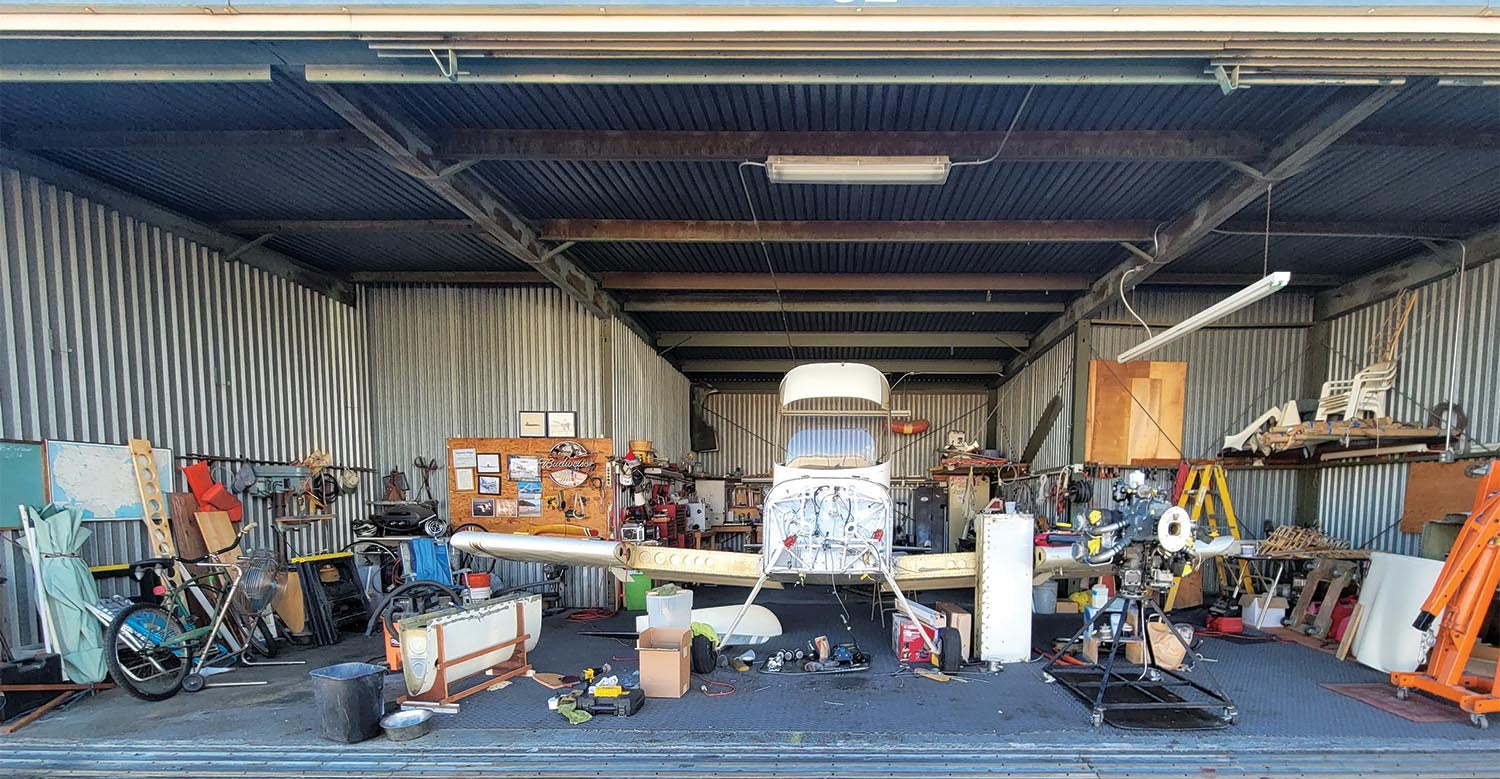 Here’s something we all sort of know: The world of general aviation is a hidden gem. Very few people get to experience an aerial view of the earth the way pilots do. A few months into flight training, I knew I was addicted and had to find a way to hold onto this new love. After getting a glimpse of how much rental prices were, I said goodbye to renting and decided that owning my own would be more cost-efficient in the long run.
Here’s something we all sort of know: The world of general aviation is a hidden gem. Very few people get to experience an aerial view of the earth the way pilots do. A few months into flight training, I knew I was addicted and had to find a way to hold onto this new love. After getting a glimpse of how much rental prices were, I said goodbye to renting and decided that owning my own would be more cost-efficient in the long run.
After realizing that some people build their own airplanes, I started seriously contemplating it. Inspired by the five different Van’s RVs that Stan Lawrence, my CFI, had built, it seemed very possible if I put my mind to it.
Most of my time is spent at the Sacramento Executive Airport (KSAC), which I call “the land of the RVs.” I’d say about half of my friends there own or have owned a Van’s RV at some point. This means that I’ve gotten to ride in quite a few, which proved to be an excellent way to figure out what I would be interested in. I’ve been in an RV-4, RV-6A, RV-7, RV-8A, RV-10 and RV-14. The one that stood out the most, however, was the RV-6 because of the side-by-side seating. Not that I would mind having an RV-7 or RV-14 but the Six is way more friendly to the purse strings.

My dear friend Kim Owen, one of the key people who got me into flying, owns an RV-6A that lives in Stan’s hangar with the RV-14 and the RV-4. After having the opportunity to fly in it, I knew that was what I wanted. (Kim and I even got to fly together in her RV-6A to Oshkosh last year!)
When I first expressed interest in building an airplane, most people supported me. But, there were a few comments about how I needed to understand what I was getting myself into, and that it might be a better idea to save up and buy something that flies first. Upon finding an RV-6 restoration project, it seemed like the perfect compromise.
Which Gear?
For a new pilot, a reasonable question would be: which gear? Both the nosewheel RV-6A and taildragger RV-6 are well known. But having earned my private pilot certificate in a tailwheel RV-14, built and owned by Stan, I had the tailwheel bug. Tailwheel airplanes are more expensive to insure and a little more tricky to fly but I felt I could manage those aspects.
The challenge of flying a tailwheel is appealing to me. I was just learning how to do wheel landings, and didn’t want to give up that style of fun for a nosewheel airplane…so my sights were set on tailwheel aircraft.
With more than 2700 completed since 1985, the RV-6 is the most popular/common Van’s aircraft. For good reason. Even with a smaller engine, the RV-6 has excellent performance—a top speed of 210 mph, cruise around 170 mph and range of 720 miles—and the low wing and bubble canopy allow for excellent visibility. Plus, the side-by-side seating allows for easy interaction and a pleasant experience for your passenger.
Even if I were to ignore the seating arrangement, the truth is that there are more RV-6s out there than the earlier RV-4 and later RV-8. There’s also a much wider price range, partly because they’ve been built over many years and equipped many different ways. An RV-6 may be as high as $90K (newer builds with modern avionics) and as low as $40K (older ones with older avionics). The RV-4 ranges from $55,000 to $65,000 and the RV-8 soars well over $100K. So the Six seemed to offer the best opportunity at “affordability.”
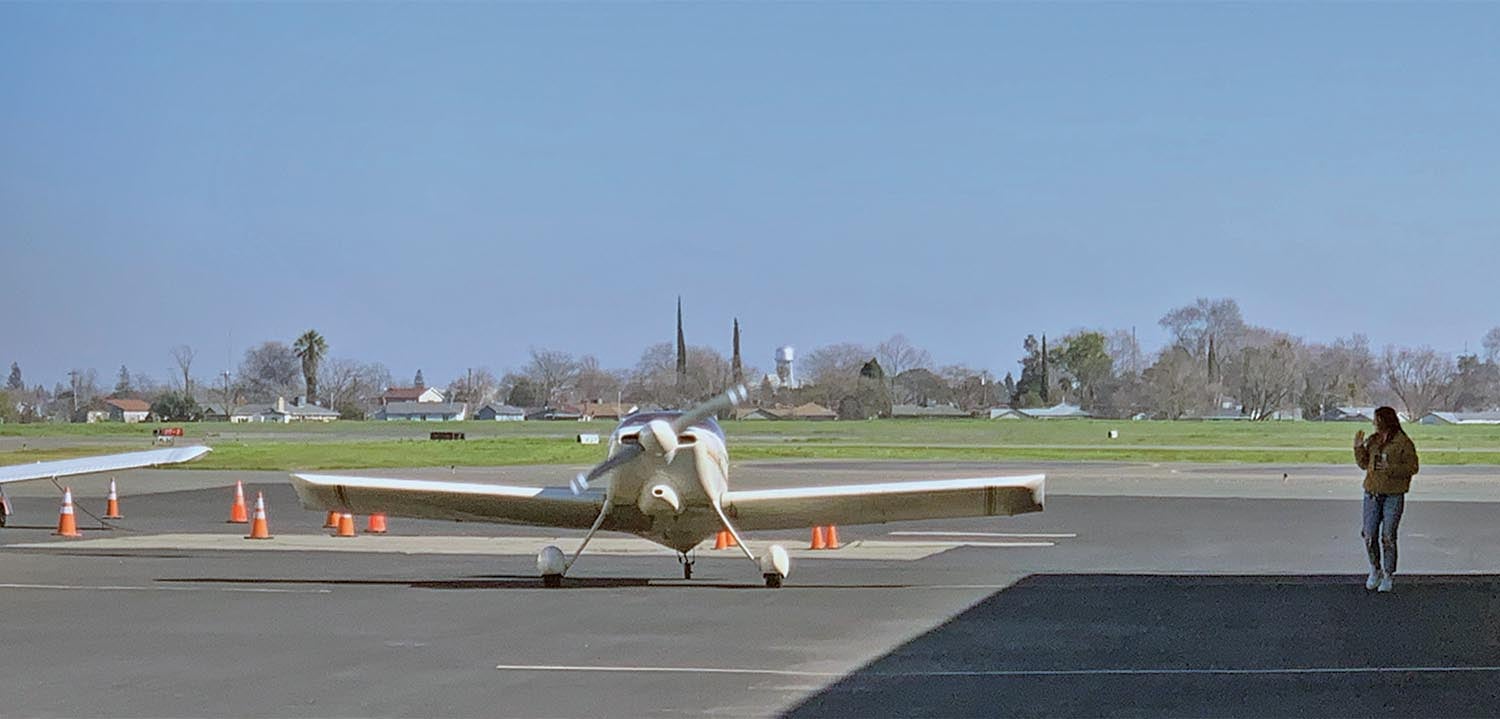
Cons of a Van’s RV-6
The only thing my RV might not be able to do for me is carry my equipment for the adventures I want to do. I’m going to do everything I can to fit my bike into the back, which may be possible if a seat is removed. And, I’m going to create an opening in the rear bulkhead to fit two pairs of skis. With help, I will make this change without affecting the structural integrity and the torsional stiffness of the fuselage.
Another big difference reflects the evolution of the RV design. Most of the RV-6s were built before matched-hole kit construction became a thing. This means that each RV-6 is kind of custom-built, in a way. If you need to replace a part of your airplane, you may find yourself redrilling a new piece of metal or re-fiberglassing parts to make it all fit correctly. It also means the quality of the construction is much more in the hands of the original builder than in how the factory made any given part.
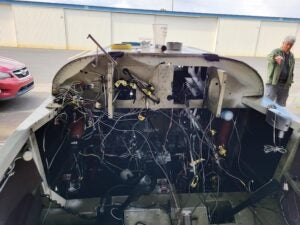
Finding My RV-6
When you’re thinking about buying an airplane, it becomes very easy to spend excessive amounts of time on Barnstormers, which is exactly what I did. Stan was excited, too, and did the same. He sent me links to lots of different airplanes to look at.
With airplanes leaving the country or being retired faster than they can be built or manufactured, the supply is definitely trailing demand. Compared to just a few years ago, there are fewer RV-6s for sale and the asking prices are higher. But they’re still out there. The only way for me to buy an affordable RV-6 was to get a partially completed airplane or a restoration project such as this one. When I saw a tailwheel RV-6 that was in my price range, I leapt.
The RV-6 I finally purchased, N2165U, was originally listed for $40K in Colorado. While it was flyable, it was being sold as a project because there was a lot that had to be done to it. It had a 180-hp Lycoming O-360 with 1100 hours. Built by Austin Snider, this RV-6 got its registration in September of 1992—ah, six and a half years before I was born.
I expected it to need some work. But the seller didn’t disclose to me how much work it needed. And, they didn’t tell me that it had been in a crash. Yes, I know now that I should have gotten it inspected. But with excitement and instant gratification combined with the feelings of urgency to buy when the price was lowered to $30K, my bank somehow broke and all my money fell out. Oops!
And boy, was I in over my head.
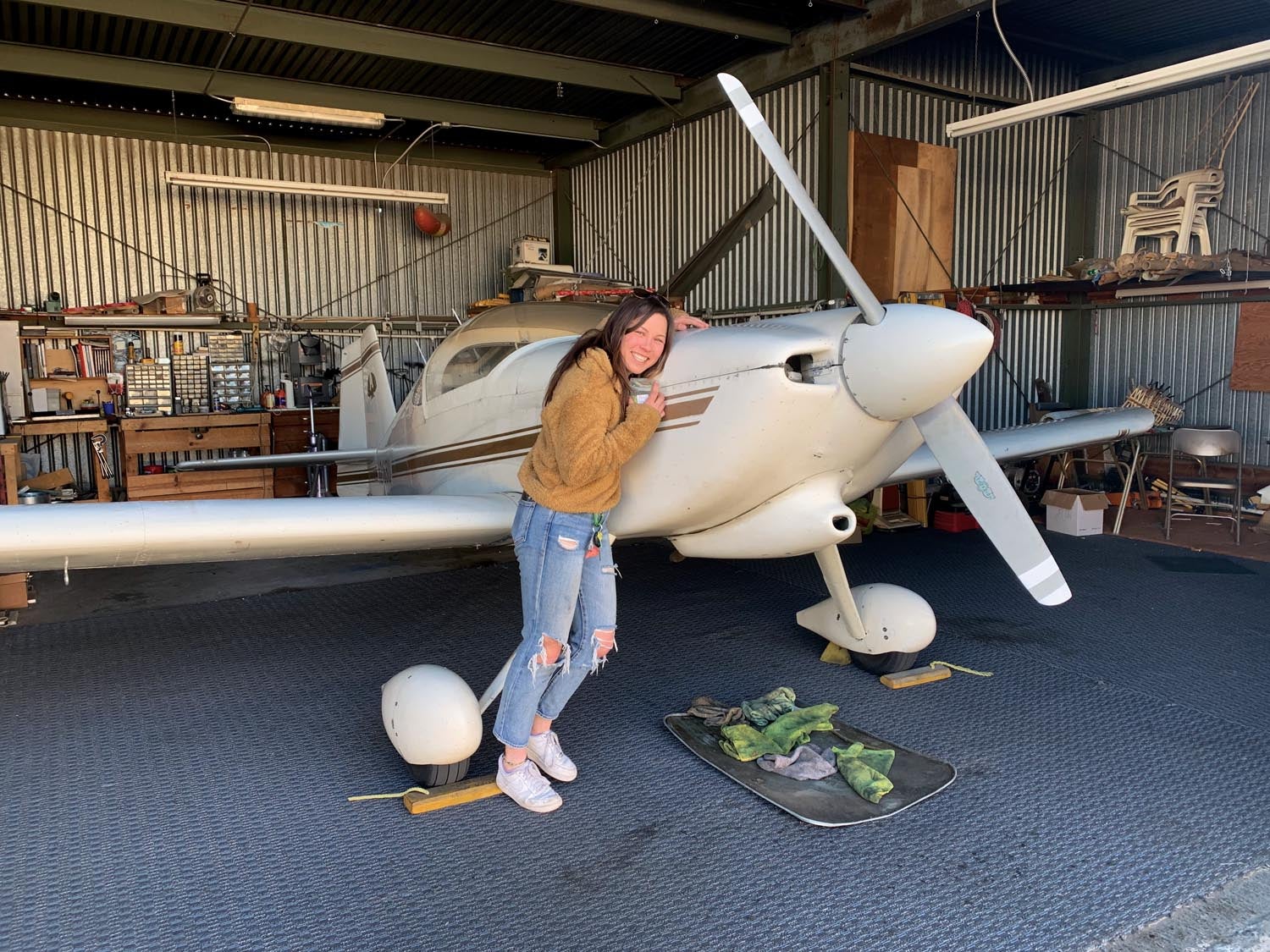
A New Home for N2165U
In hindsight, it was risky wiring money to a stranger and not inspecting the airplane in the first place. I was relying purely on my limited knowledge and on the word of others—and I’m sure I’m not the first to do this. After talking to the seller, we decided that I was too low-time of a pilot and without having flown or seen the plane before, it would be risky for me to fly it over the mountains. We arranged to have a gentleman ferry it out to California from Colorado.
Stan wasn’t there the day it arrived, but Kim and her husband, Mike, were. I remember being so happy to have company there with me on such an important and exciting day. Kim has been with me through my whole aviation journey, from my first flight to connecting me with Stan, being there for my first solo and now there when I bought my first airplane.
The guy who flew it out, Jared Garretson, had a friend, Carl Mayer, who came with him. They had to take it to Kansas the night before, which, yes, does sound like the long way from Colorado to California. Afterward, they arrived at KSAC, then took my plane up to Chico, California, to look at a plane of their own and then returned to bring my plane to me.
I was ecstatic. My very own airplane. I remember seeing it pull up and the only thing I could think about was, “We are going to be best friends.”
I remember seeing the guys hop out of the RV and put their cowboy boots on. They were friendly folks from Kansas, not much older than me. We then did a good walkaround inspection of the plane. They showed me the fuel and the oil leaks. When I bought it, I knew the fuel tanks were leaking and that it would be a problem that I would have to solve. I was quickly discovering the rest.
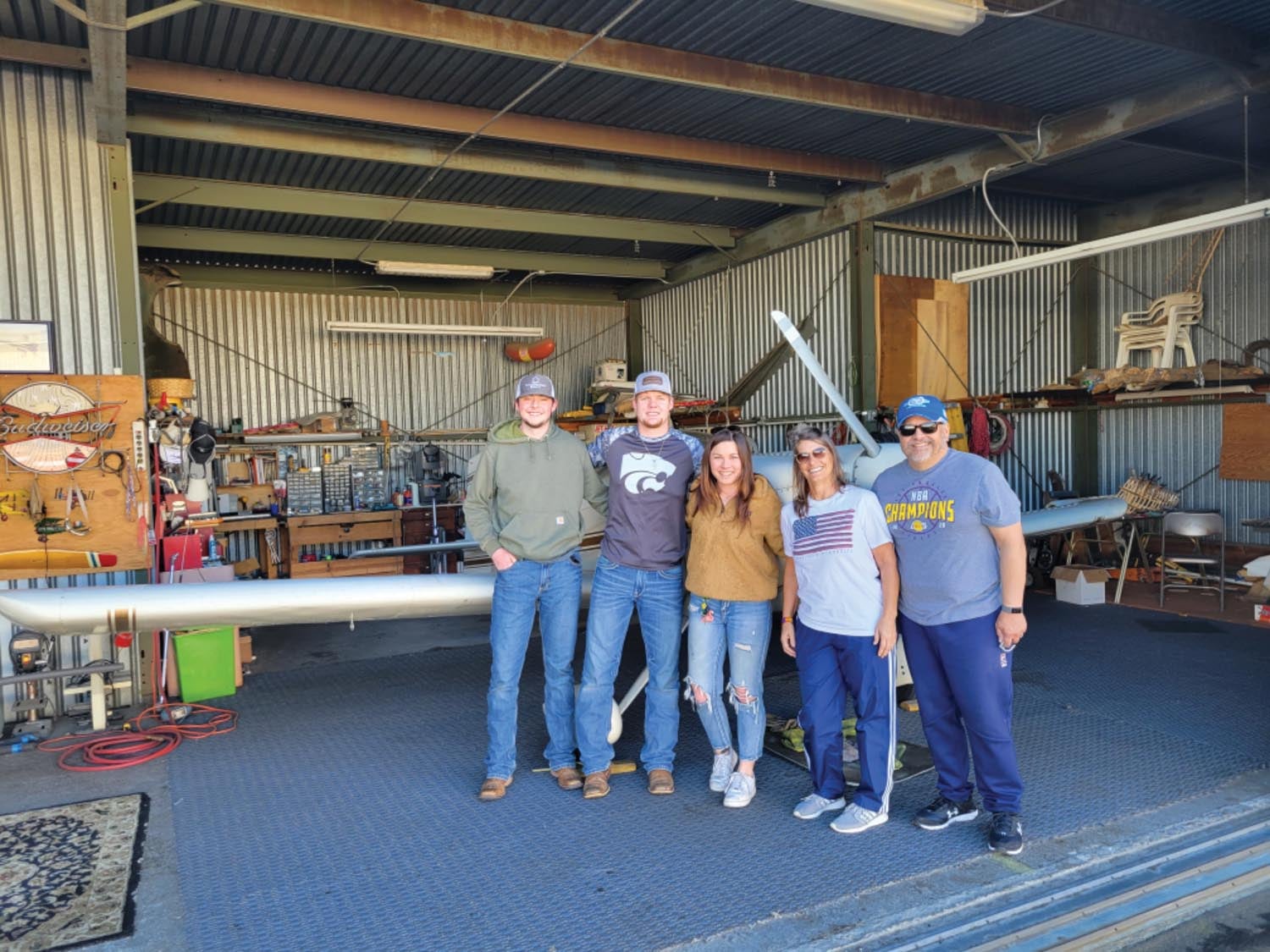
They showed me the panel and what each switch, button and doohickey did. There were a lot of pieces, mostly switches and wires, that seemingly went nowhere, almost like someone had replaced a part and then forgotten to fully remove everything that was there before. Kim had me take a video of Jared explaining everything so that I could go back and reference it if needed. We exchanged paperwork and rolled the RV-6 into its new home, Hangar 32. I took Jared and Carl to lunch at a nearby Mexican restaurant as a thank you for everything. Afterward, I dropped them off at the airport, where they then continued their journey.
Soon after, N2165U and I got acquainted. I started cleaning and taking off some panels for inspection. Later that night, I dragged my mom out to the airport to show her my new toy/best friend—what all of my leftover college funds went toward. She was excited that I was excited. Afterward, we said goodnight to my baby and closed up the hangar. The journey was just beginning.
Photos: Kim Owen &Tenley Ong.














Congratulations! I’ve been there. Bought a damaged RV-6 that I hauled home and rebuilt. Majored the engine, fixed the same leaky fuel tanks, fixed about a thousand electrical issues, and now enjoy the heck out of it.
Thank you, Jeff! That’s awesome, congratulations to you too. Hope to see you in the skies!
Congratulations young lady!
Thank you!!
Hey Tenley! This article is awesome! I’m glad to have been apart of this! It looks like you’re enjoying your new plane. Maybe I’ll see you at Oshkosh one of these days!
– Carl
Congratulations Tenley! I’d been a flying club member for over 20 years (and enjoyed the experience) but bought an RV6-A last year to experience the joy (and occassional frustration) of ownership AND to help my son build hours in his quest to fly professionally, It has been a great plane and we quickly grew to love it. My son logged about 500 hours in it this past year and it’s still going strong. I predict your RV6 will be a great plane for you too!